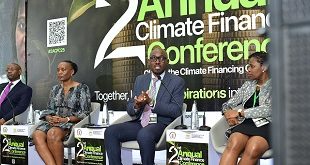
Opportunity galore
Irene Batebe, the Commissioner Midstream Petroleum Department at the Ministry of Energy and Mineral Development explained that the Jan.17 event was intended to point out to Ugandan service providers the available opportunities for investment and supply of goods and services.
“In taking forward this project the Ministry would like to emphasize the importance of collaboration and working in partnerships with all stakeholders,” Batebe said.
As part of this, she noted that the ministry is in the process of putting up a national content policy that will promote participation of Ugandan labour and enterprises in the oil and gas industry.
Peninah Aheebwa, the Director technical support services at the Petroleum Authority of Uganda (PAU) in charge of national content also emphasized optimal participation of Ugandans.
Over the years, several studies have focused on this. A 2011 study highlighted available opportunities and challenges that would inhibit Ugandans from fully participating in the sector.
In 2013, an industry baseline survey done by the international oil companies, assessed 25 of the local industries in Uganda and also identified what they could and could not do.
And in 2014, a capacity needs analysis also put in place a workforce skills development strategy and plan and the government was able to set targets for foreign companies.
PAU has, as a result of these studies, developed the national supplier data base –a platform where the PAU, the suppliers and the buyers (IOCs) interact. The idea is to increase the local suppliers’ visibility, efficiency in the supply chain and create fair competition.
So far, the database has 927 companies (both local and foreign registered) and more are expected to register in another window expected to open at the start of March.
Ali Ssekatawa, the director Legal at PAU noted that the disclosure of the FEED findings was intended to further help these suppliers weigh their options in the project.
On whether Ugandan businesses would get deals in Tanzania, Ssekatawa said the two governments were involved in negotiations with the view of standardizing the local content regulations of the two countries.
Aheebwa also noted that the pipeline was a single-integrated project and discussions are ongoing to open it up for service providers to cross borders.
Aheebwa even revealed that the government has even ring-fenced services for locals.
Aheebwa was referring to the 3-tier procurement process where if an international oil company is not able to get a Ugandan company to do something, the law requires that the foreign company partners with the local company.
She advised the local entrepreneurs to look beyond transporting between Mombasa and Tanga to the site.
“Look out for foreign firms that are coming into the country,” Aheebwa said, “do joint ventures and prepare so the biggest portion of the investments on the project does not leave the country.”
Lamb offered the same counsel before exiting the podium to head to Tanzania where he was to make a similar presentation.
“Don’t be fearful to partake in the opportunity,” he said, “look at the documents and interpret the information.”
Douglas Evans, the Chairman of GIE described the pipeline route, which Uganda chose in 2016 as the least cost and most robust route, as one of the “world class” projects his firm has recently worked on.
“You have an opportunity here and our challenge is to inspire you and explain to you those opportunities so you take them up,” Evans said.“But the opportunities are not going to happen overnight, they will take months or even years to develop.”
 The Independent Uganda: You get the Truth we Pay the Price
The Independent Uganda: You get the Truth we Pay the Price



